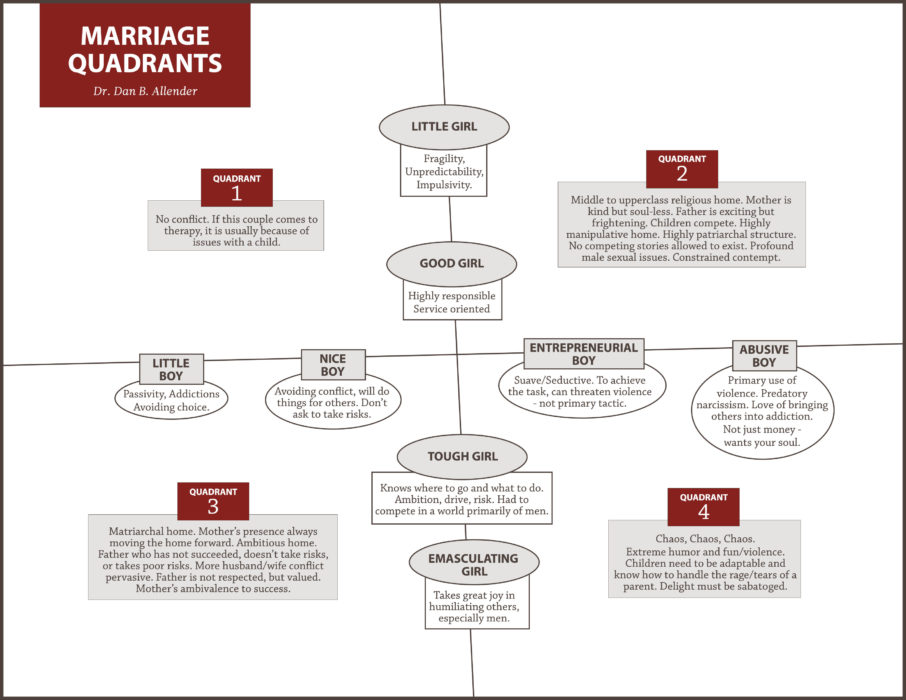The Marriage Quadrants, Part Four

This week on the Allender Center Podcast, Dr. Dan Allender continues our series about the Marriage Quadrants, a theoretical framework of marriage that informs how he engages and works with couples. (You can find a PDF laying out the quadrants at the bottom of this post.)
“Underlying the contempt is massive hurt.”
In this episode Dan moves on to Quadrant Three, which bears some inverted similarities to what we talked about last week in Quadrant Two—one spouse committed to influence and power, with another spouse committed to conforming. “It’s a world in which there is so little capacity to deal with conflict, to engage and actually open the door to greater desire,” says Dan, “and therefore to honor both the distinctiveness and the overlap of two hearts creating something beautiful together.”
If the familiar line about “two ships passing in the night” is reflected in this framework, it is in Quadrant Three, in which the wife is the dreamer and the hard worker while the husband would rather spend his time pursuing a hobby or helping out at church. But while Quadrant Two is marked by a desire for success, Quadrant Three is about the need to succeed—it’s a matter of survival. So the intensity and demand are significantly greater, often leading to high levels of frustration and contempt that the wife feels for the husband, whom she sees as mediocre and underachieving.
The world is more raw and the contempt is often far more direct.
Dan explores the various ways that children might live in Quadrant Three, responding to the wife’s pity and contempt for her husband, coping with the husband’s fear of risking himself on his children’s behalf, and navigating the intense triangulation that can exist from either direction. This—learning how to navigate their parents’ conflict and drama—often becomes the primary task of Quadrant Three children.
“The woman remains married because at least her husband cuts the lawn,” says Dan. “The husband remains married because he doesn’t want to have to risk dating. So it’s a convenience rather than a commitment.”
As loneliness and disdain grow over the years, beginning to seek help and scratching the surface of these issues might unearth significantly greater degrees of hurt and fear, which point to historic wounds and deep vows that were made well before marriage. This process of unearthing long-buried debris makes working with a Quadrant Three marriage perhaps the most difficult, says Dan. But as we continue this series, after looking at Quadrant Four next week, Dan will address what it might look like to seek growth and change in these in seemingly hopeless relationships.

